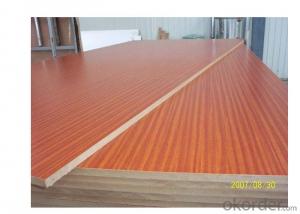When it comes to building and construction projects, the choice of materials plays a crucial role in determining the durability, aesthetics, and structural integrity of the final product. One such material that has gained immense popularity in recent years is ACX Plywood, specifically the exterior grade, which is known for its exceptional weather resistance. But what exactly is ACX Plywood, and why is it the go-to choice for many contractors and architects? Let’s dive in and explore the world of ACX Plywood and its remarkable properties.
The Wonders of ACX Plywood
ACX, which stands for Architectural Composite Crossband, is a type of plywood that is specifically designed for exterior applications. It is made from multiple layers of wood veneers that are crossbonded with waterproof adhesives, ensuring maximum strength and durability. This unique construction not only makes ACX Plywood resistant to moisture and decay but also provides excellent dimensional stability, making it an ideal choice for outdoor projects.
Weather Resistance: The Key Feature
The primary reason behind the popularity of ACX Plywood is its exceptional weather resistance. Unlike traditional plywood, which can be susceptible to warping, delamination, and rotting when exposed to harsh weather conditions, ACX Plywood can withstand the test of time. The secret lies in its manufacturing process, where the layers of wood veneers are arranged in a crossband pattern, with each layer perpendicular to the adjacent ones. This arrangement significantly enhances the plywood’s resistance to warping and twisting, allowing it to maintain its shape and integrity even under extreme weather conditions.
Applications of ACX Plywood
Given its superior weather resistance and strength, ACX Plywood is a popular choice for a wide range of applications. Here are some of the most common uses of this versatile material:
– Roofing and Siding: ACX Plywood’s ability to resist moisture and maintain its structural integrity makes it an excellent choice for roofing and siding applications. It can be used to create durable and long-lasting roofs and walls that can withstand harsh weather conditions.
– Flooring: The dimensional stability of ACX Plywood makes it an ideal material for flooring, especially in areas exposed to moisture, such as bathrooms and kitchens. It can also be used for creating outdoor decks, providing a sturdy and weather-resistant surface.
– Structural Components: Due to its strength and durability, ACX Plywood is often used as a structural component in various construction projects. It can be used for load-bearing walls, beams, and columns, ensuring the overall stability and strength of the structure.
– Furniture and Decor: ACX Plywood’s resistance to decay and moisture, combined with its aesthetic appeal, makes it a popular choice for creating outdoor furniture and decorative elements. It can be used to craft benches, tables, and other pieces that can withstand the elements while adding a touch of style to any outdoor space.
Environmental Benefits of ACX Plywood
In addition to its practical benefits, ACX Plywood also offers several environmental advantages. The use of waterproof adhesives in its manufacturing process reduces the need for additional treatments, such as painting or sealing, which can be harmful to the environment. Moreover, the crossbonded construction of ACX Plywood reduces the need for wood preservatives, further minimizing its environmental impact.
Maintenance and Care of ACX Plywood
One of the most appealing aspects of ACX Plywood is its low maintenance requirements. Due to its inherent resistance to moisture and decay, ACX Plywood does not require frequent treatments or coatings to maintain its performance. However, there are a few simple steps you can follow to ensure the longevity and appearance of your ACX Plywood projects:
1. Regular Inspection: Periodically inspect the plywood for any signs of damage or wear. Early detection can help prevent further deterioration and extend the life of the material.
2. Cleaning: Clean the plywood surface regularly to remove dirt, debris, and other contaminants that can affect its appearance and performance. Use a mild detergent and water, and avoid using harsh chemicals that can damage the surface.
3. Repair: If you notice any damage or wear, repair it promptly to prevent further issues. Depending on the extent of the damage, you may need to sand, fill, or replace the affected area.
4. Protection: While ACX Plywood is inherently weather-resistant, it’s a good idea to protect it from direct sunlight and extreme temperatures when possible. This can help maintain its color and appearance over time.
The Future of ACX Plywood
As the construction industry continues to evolve and prioritize sustainability and durability, ACX Plywood is poised to play a significant role in shaping the future of building materials. Its unique combination of weather resistance, strength, and environmental benefits make it an ideal choice for a wide range of applications, from residential to commercial projects.
In conclusion, ACX Plywood’s exterior grade is a testament to the power of innovation in the world of building materials. Its exceptional weather resistance, combined with its versatility and low maintenance requirements, make it a top choice for architects, contractors, and homeowners alike. So, the next time you’re planning a construction or renovation project, consider the benefits of ACX Plywood and how it can enhance the performance and aesthetics of your project.

